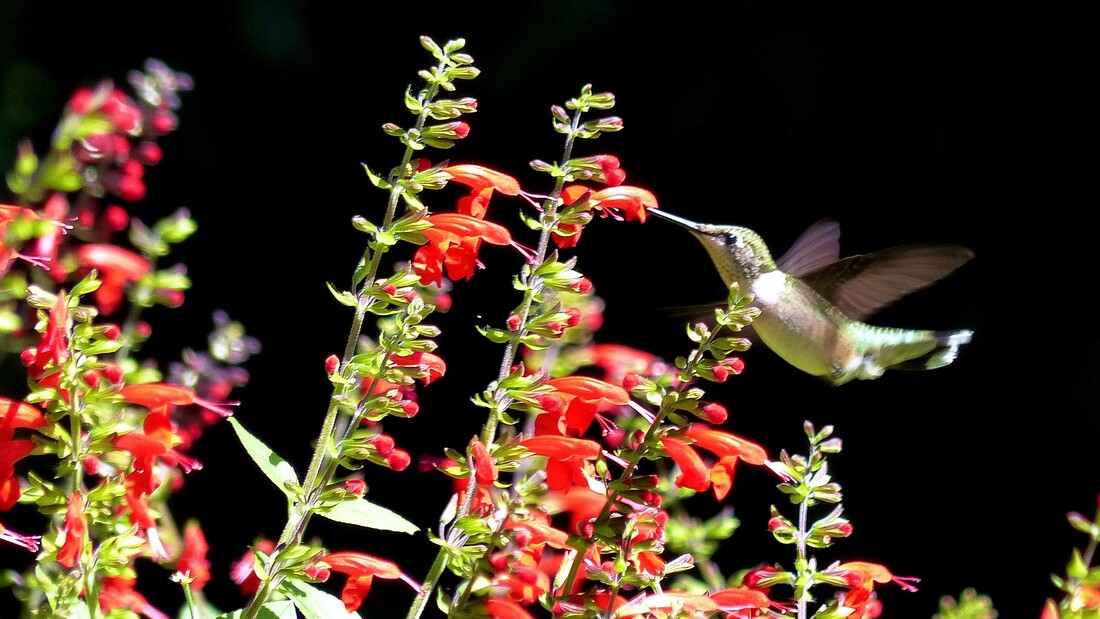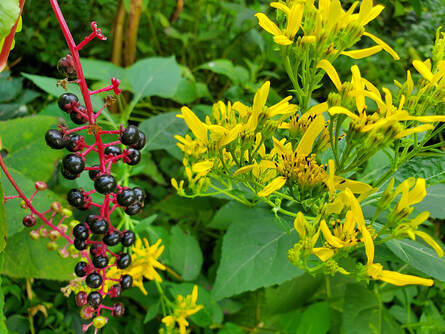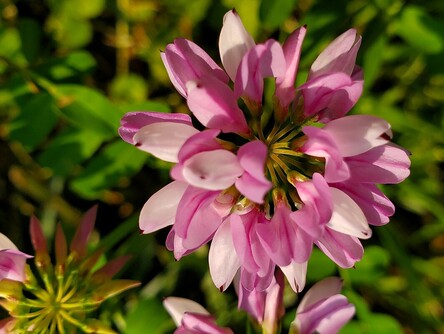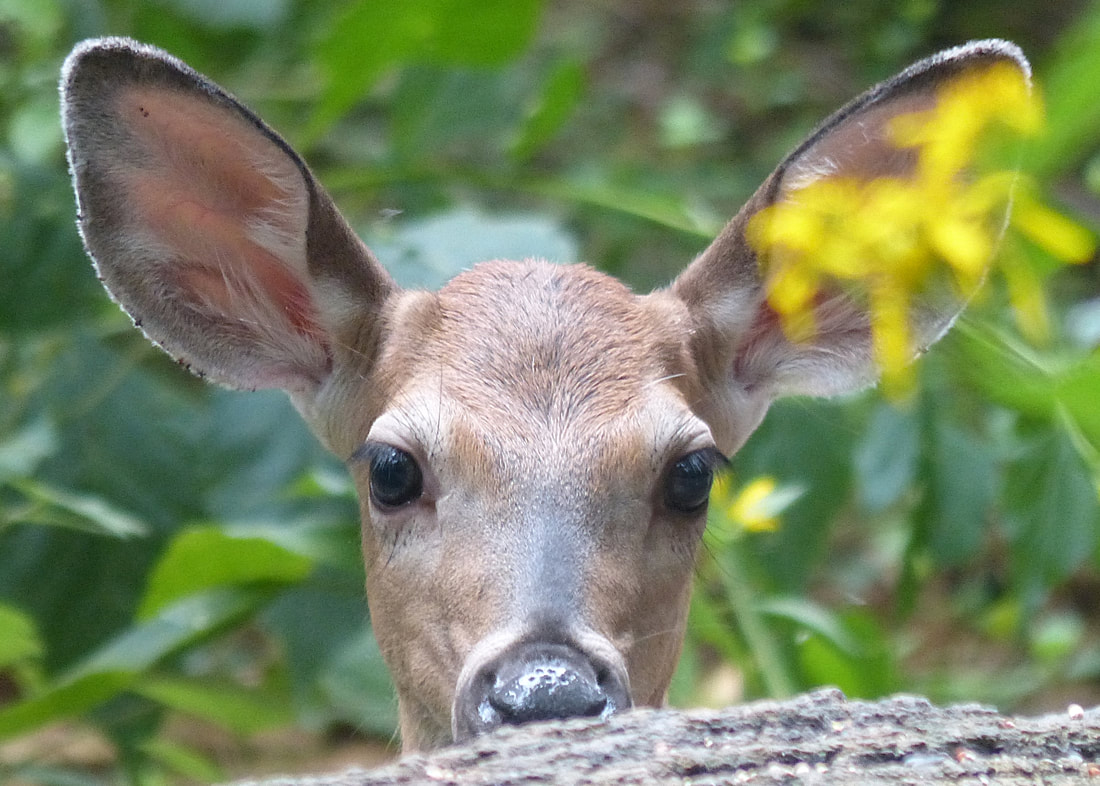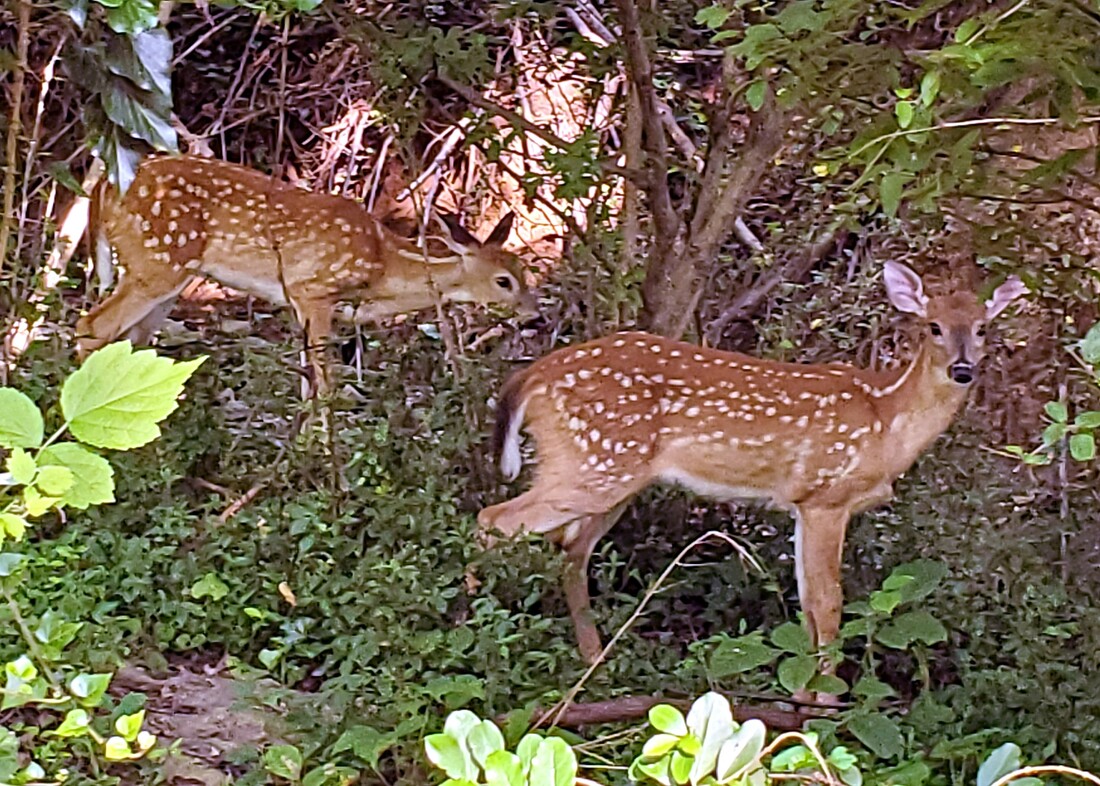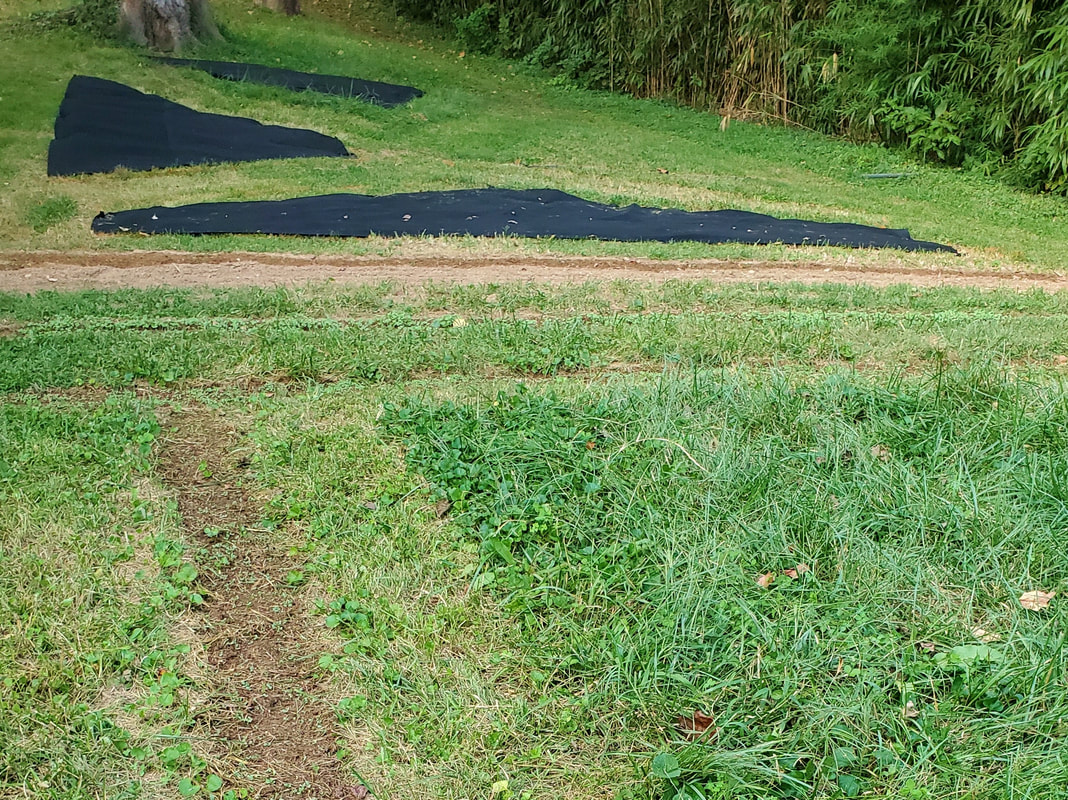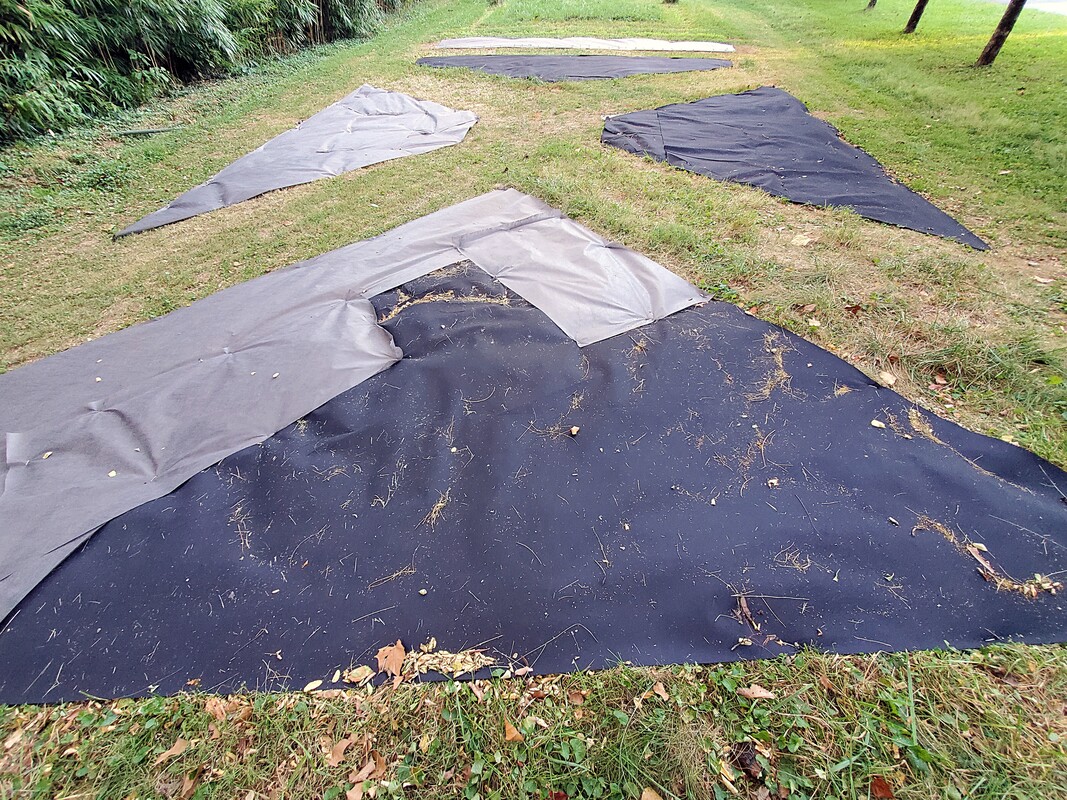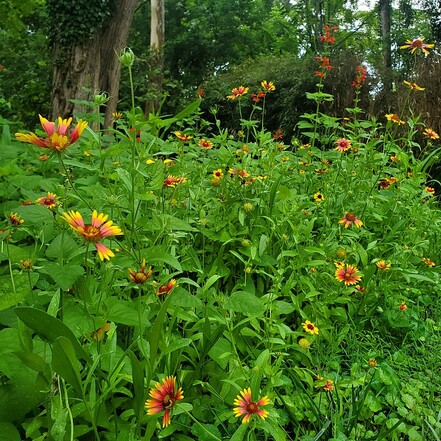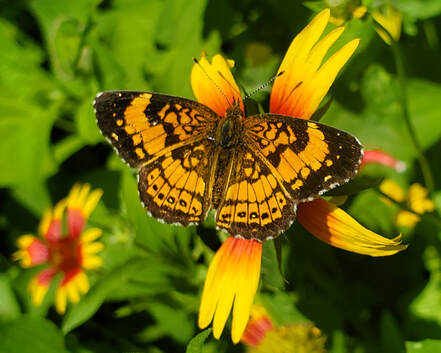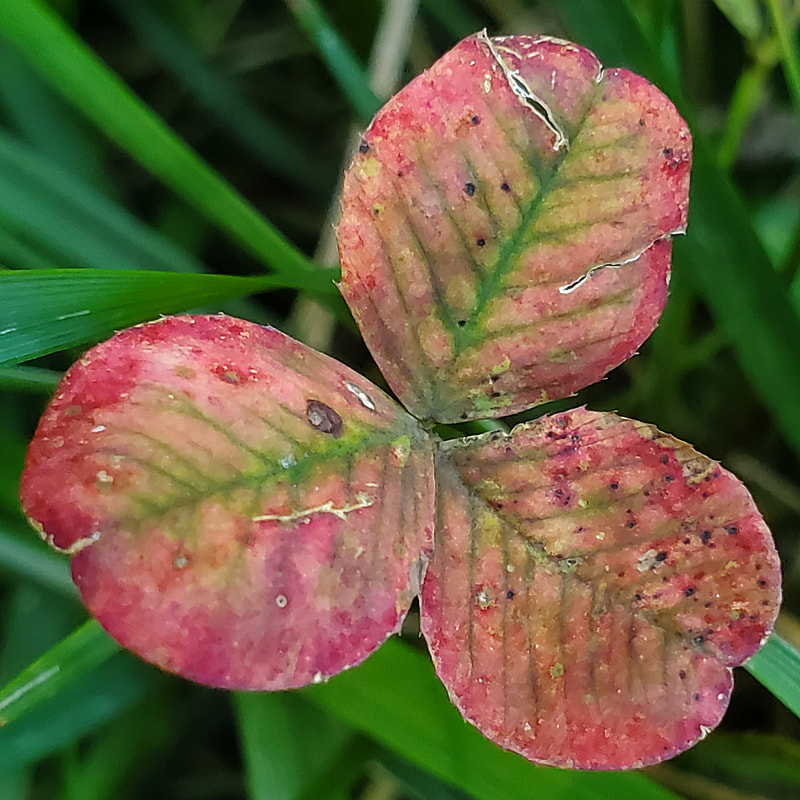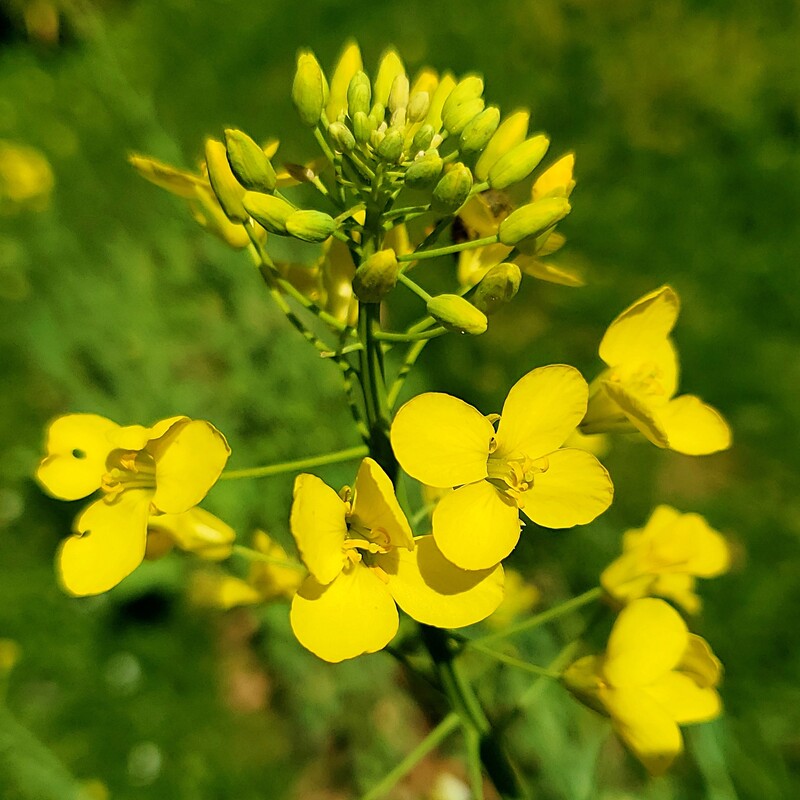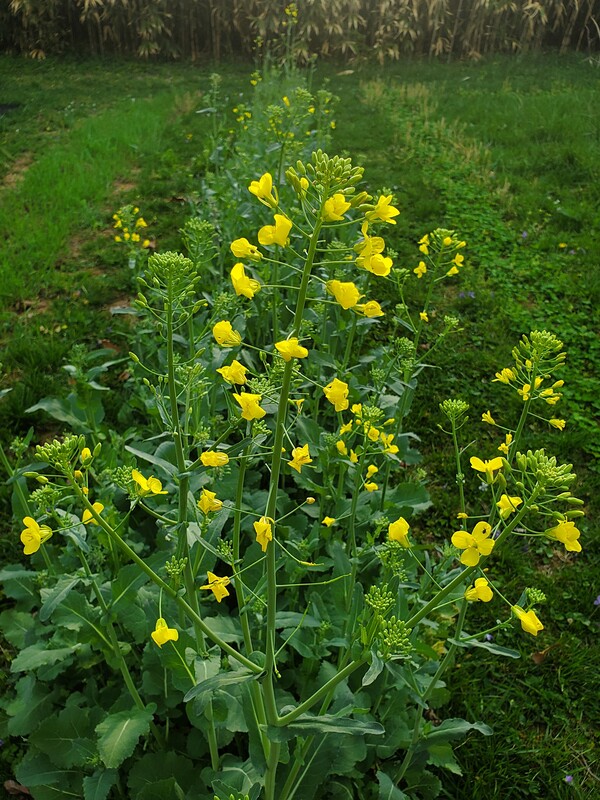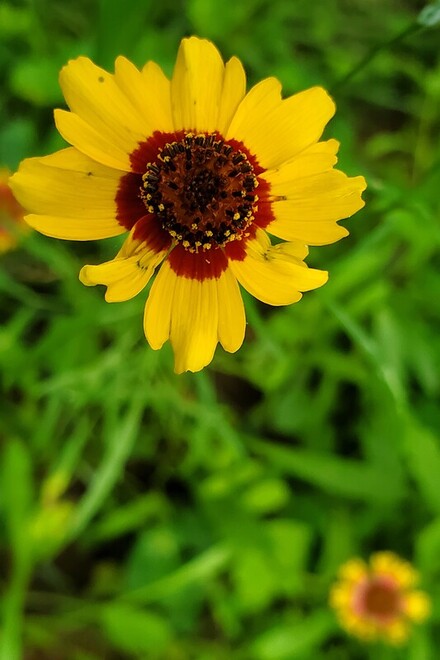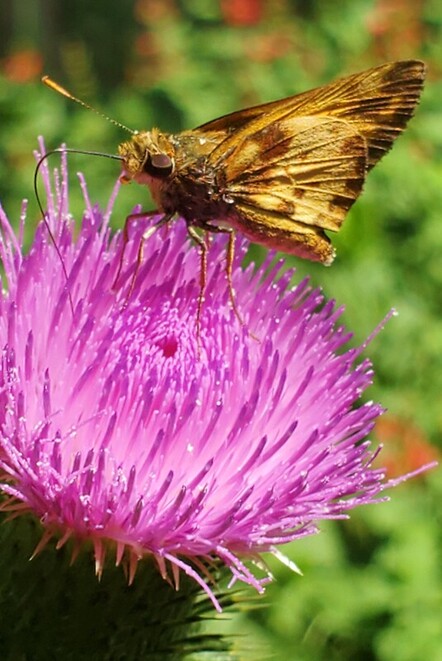How To Create a Pollinator Garden
The easiest way to start a pollinator garden is to select an area of your lawn, simply quit mowing, and see what happens. The most challenging aspect of this bold step will be to remind yourself that you aren't allowing "weeds" to overrun your pristine lawn, you are encouraging wildflowers to reclaim the land taken away from them by lawn grass -- an array of non-native species that were first imported into North America by early colonists. No, the expanses of bright green grass that took over this country as symbols of progress and prosperity are not native, they are arguably the most invasive and destructive species ever unleashed on the continent. You may want to memorize and rehearse explaining this information, for you may need to sound very convincing to keep peace with your neighbors and avoid legal entanglements. At least that was our experience when we began "rewilding" our acre of grass and allowing nature to reclaim its rightful place.
Our first year of rewilding was a bit underwhelming, but the second year produced an astonishing crop of pokeberry, yellow crownbeard, and crown vetch. Before you recoil at the thought of pokeberry growing in your yard, consider that the purplish red stalks are as eye-catching as the ever-popular red-twig dogwood, and the berries -- which ripen in late summer and early fall -- are literally flight fuel for migrating birds. With crown vetch as an understory plant, crownbeard growing seven-feet tall, and the pokeberries soaring to a height of more than 10 feet, we had a wondrous thicket where only grass had grown the previous 150 years. One of our resident white-tailed does took advantage of the thick cover and gave birth to two fawns less than 50 feet from our kitchen window. The proximity of the house apparently discouraged coyotes from seeking out her hiding place, because it was the first time in years a doe successfully raised two fawns instead of losing at least one to the packs of four-legged predators that roam our suburban neighborhood at night.
One problem with letting nature decide what wild plants take over your former lawn is you may not have an optimal bloom season. If pollinators don't have blooms to feed on from spring through fall, they may die during the gaps between blooms. Which brings us to the topic of creating a planned pollinator garden. It isn't quite as easy as just stopping mowing an area, but it isn't complicated or expensive either. Our experience is it takes less time to create and care for a pollinator garden than to mow the grass you will be replacing.
To plan your pollinator garden, we suggest pencil, paper, ruler and maybe a 100-foot landscaping tape. It is much easier to erase and move plants on paper than to dig them up and move them in your yard.
To plan your pollinator garden, we suggest pencil, paper, ruler and maybe a 100-foot landscaping tape. It is much easier to erase and move plants on paper than to dig them up and move them in your yard.
After you design your planting space on paper, mow the grass in your planting areas as short as possible, and put down landscaping fabric (as shown in the photos above). The fabric helps you better visualize how the finished garden will look, and again, it is easier to move fabric than plants. If you're satisfied with the layout, tap in landscaping staples to hold the fabric in place. We have found it takes at least 2-3 months to kill all the grass and other plants beneath the fabric. Yes, using weed and grass killers will expedite this process, but we don't recommend such and have successfully transformed our one-acre yard without using any chemicals.
If you want to keep the process ultra simple, choose a reputable supplier for your region of the country, and order a ready-made mix of native wildflower seeds that is ample for the square footage of your space. After enough time has passed, pull up the fabric and plant the seeds. If you follow the directions on the packet when you plant the seeds, you will likely achieve very good results. We have found raking enough to put grooves in the dirt helps seed germination success, and that some seeds need to be pressed into the dirt enough to hold them in place -- but not block sunlight -- while others need a very thin covering of topsoil. From there it's just a matter of keeping the ground damp until the seeds sprout. After the wildflowers start growing, it helps to water the seedlings until they are at least 10 inches tall. That's all we did to transform an area of grass into the wildflower plot pictured below. And yes, the pollinators seem to like it.
If you want to keep the process ultra simple, choose a reputable supplier for your region of the country, and order a ready-made mix of native wildflower seeds that is ample for the square footage of your space. After enough time has passed, pull up the fabric and plant the seeds. If you follow the directions on the packet when you plant the seeds, you will likely achieve very good results. We have found raking enough to put grooves in the dirt helps seed germination success, and that some seeds need to be pressed into the dirt enough to hold them in place -- but not block sunlight -- while others need a very thin covering of topsoil. From there it's just a matter of keeping the ground damp until the seeds sprout. After the wildflowers start growing, it helps to water the seedlings until they are at least 10 inches tall. That's all we did to transform an area of grass into the wildflower plot pictured below. And yes, the pollinators seem to like it.
To take your pollinator garden to the next level and maximize its usefulness with a full spring to fall bloom season, you will need to know your plant hardiness zone, research the bloom calendar for your area, and look at photos of plants to decide what you prefer. In your planning, take into account sun exposure, hours of sunlight, where shade will fall at what time of day, and water requirements. In our area of Virginia, recent winters have sometimes granted temperatures in the 60s through Christmas, and temperatures again in the 60s as early as February. Which leads to insects flying around looking for food when there is none. To extend our bloom season we researched any and all available plants that would bloom early and late in the year and hopefully be there when the insects needed them. Cool weather deer food plot favorites such as crimson clover, dwarf Essex rape, and Austrian winter peas -- planted adjacent to the southeastern native wildflowers mix -- filled in the bloom season from February until December. As you can see from the following photos, the blooms weren't only there anytime insects were likely to need them, they also provided a wonderful splash of bright colors where for more than a century the only color was the brown of dormant winter grass.
Warm weather is of course show-off season for a pollinator garden, and as the following images show, a garden that is good in cold weather can be great the rest of the year. And remember it's a win-win situation: with a pollinator garden you are enabling nature to reclaim its rightful place, you are providing food for pollinators, birds and animals, and you aren't having to mow, water or fertilize to keep your former green-desert lawn up to your neighbors' standards.

